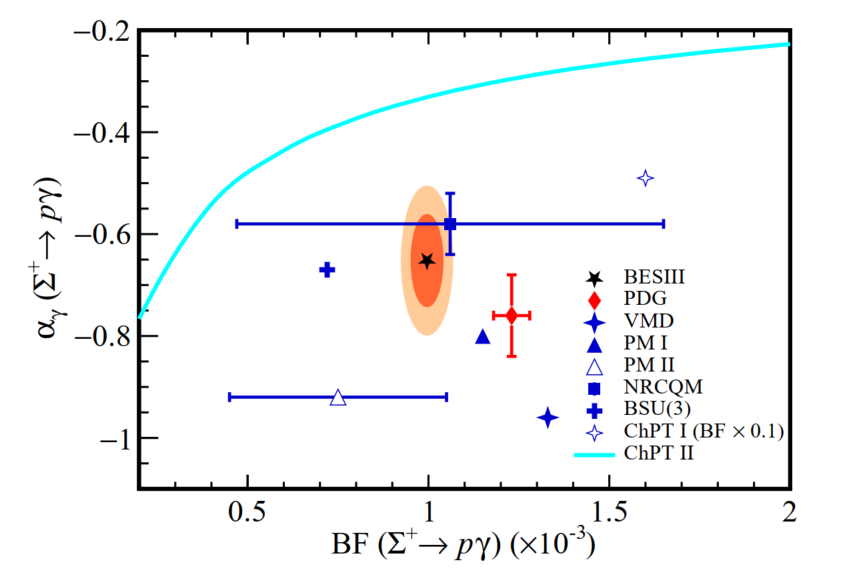

The BESIII collaboration has reported the first absolute branching fraction and decay asymmetry of Σ+→pγ with 10 billion J/ψ data. The measured value of the branching fraction is lower than the world average by 4.2 standard deviations. Both the branching fraction and decay asymmetry parameter are measured with the most precision to date. The results have been published recently in Physics Review Letters [Phys. Rev. Lett. 130, 211901 (2023)].
The Σ+→pγ decay was the first observed radiative hyperon decay and its large decay asymmetry has stimulated continued controversy over several decades as it violates the Hara’s theorem. Various phenomenological models have been proposed to explain the experimental results, but none of them gives a unified picture. Σ+→pγ serves as a primary input for various models, thus, more precise measurements of this process will offer critical information in constraining theoretical models and, moreover, improve the Standard Model (SM) prediction of Σ+→pl+l- decays to search for new physics beyond the SM.
Making use of the huge number of polarized hyperons produced in J/ψ decays with relatively clean background, Σ+→pγ is selected by utilizing a double-tag technique. The measured value of the BF is (0.996 ± 0.021stat ± 0.018syst)×10-3, 4.2 standard deviation from the average of Particle Data Group. The decay asymmetry parameter of Σ+→pγ is measured to be -0.652±0.056stat±0.020syst with best precision ever. Moreover, CP violation in Σ+→pγ decay is probed for the first time with a precision of O(10-2). These results provide a new touchstone for various phenomenological models and better constraints on the limits of physics beyond the SM, and the precise measurement of Σ+ →pγ at BESIII shows great potential of studying radiative hyperon decays at e+e- collider than at the conventional fixed target experiments.

Figure 1: Comparison of Branching Fraction and decay asymmetry parameters of
Σ+→pγ from BESIII measurement, PDG, and predictions from various theoretical models.
URL: https://link.aps.org/doi/10.1103/PhysRevLett.130.211901